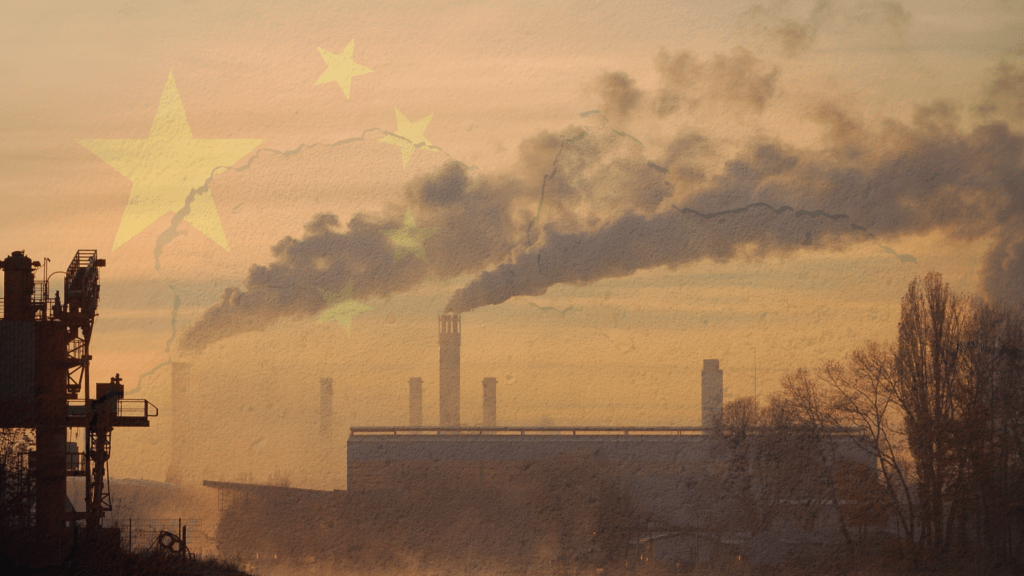Climate activist groups have said that criticizing China for its abysmal human rights record is bad for the planet — that calling out the Chinese Communist Party (CCP) for its genocide against ethnic minorities might make Beijing ignore the West’s efforts to roll back CO2 emissions.
For years, China has used the West’s worry over climate change to build up their industrial power. They have captured much of the mineral sourcing and processing used in making EV car batteries. For renewables, China dominates the global solar supply chain and is one of the world’s biggest wind turbine manufacturers. In fact, some 42 forced-labor-made Xinjiang Goldwind turbines are spinning somewhere right now in the United States. To China, the West’s climate change policies carry the sickly sweet scent of opportunity.
China has made more than its fair share of promises to cut CO2 output, including a pledge this year to obtain carbon neutrality by 2060. For environmental groups, China’s promises are as good as gold, but a cursory review of past history reveals a pattern of unkept promises by the CCP.
When it comes to China’s extravagant commitments, the international community must look to the past to inform its expectations for the future.
China’s history of environmental action is one of many words and little action. Beijing knows that its promises allow politicians in the U.S. to claim victory in the media, but in truth cost China nothing.
In 2009, China signed onto the Copenhagen Accord, making several significant environmental promises in the process. Beijing promised to cut carbon emissions by 40% by 2020. The result: China’s emissions continue to climb.
China also promised to increase their non-fossil fuel energy supply to 15% by 2020. Realizing they were behind on their goal, China’s ruling party lowered their target to just 10% a couple years ago and are now boasting attaining that target in 2020.
China made more promises when it joined the Paris Climate Accords in 2015. Most notably, they said they would cut emissions by 60% by 2030. However, in order to actually accomplish this, China would have to massively downsize it’s coal industry.
As it turns out, the CCP had no plans to do so. Instead, China has only increased its coal production for power utilities, supported in part by reliance on forced labor from Xinjiang. Although it is still too early to say, the only way China could meet their 2030 goal is if they turned on their new nuclear power plants faster and shut down coal. They could do this and claim success, but the allure of coal is just too strong for Beijing to resist.
China has promised to reduce coal before. In 2014, China promised to reduce their coal consumption to less than 4.2 billion tonnes annually until 2020, as part of their Energy Development Strategic Action Plan. The result: China has consumed an average of 4.32 billion tonnes of coal annually since 2016.
In 2019, China pledged to implement a carbon emission trading system, where companies would trade a finite number of carbon emission permits, so that carbon emissions would be capped at a government-determined value. Although officially implemented in 2021, fees and fines are set so low that the system might as well not exist.
Instead of reducing its domestic carbon footprint, China is busy making the green tech that will help Europe and the U.S. do it. They are the major player in the world’s wind industry and the story is similar with solar now.
But China’s solar industry is not as clean as one might think. A key component of Chinese solar cells is polysilicon. The process of turning silicon rocks into polysilicon is itself an energy-intensive process, and China has added 38 gigawatts of coal-fired plants just this last year to power the process. What’s more, many of these coal plants are located in the Xinjiang region, where the CCP is committing genocide against the ethnic Uyghurs. The more the U.S. imports China solar, the more we are essentially outsourcing pollution to China.
China stands much to gain from these emerging and increasingly profitable industries. But there is no money to be found in cutting greenhouse gas emissions and laying off coal. When it comes to cleaning up the atmosphere, China faces a perverse incentive to underperform and let other countries rely on them for green tech.
The U.S. and the big global environmental NGOs must pay attention to China’s history of broken promises. History shows us that Beijing’s promises are there to placate the U.S. and Europe, all the while setting the table for China to be the go-to manufacturer for all the alternative fuel supply the Western world wants.
If climate change activists and lawmakers actually want to reduce dependence on fossil fuels, they would stop supporting policies that outsource pollution and jobs to China.













